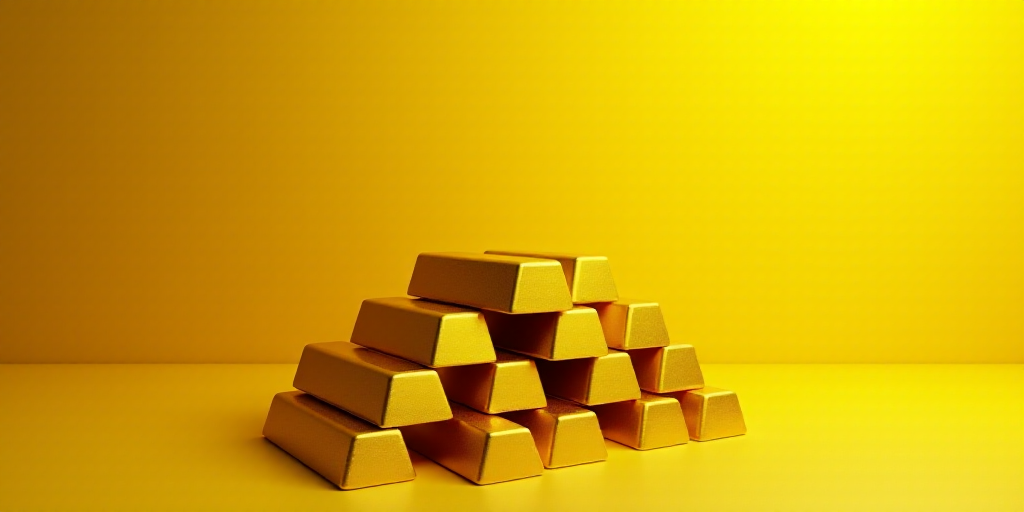Background on Jerome Powell and His Role
Jerome Powell is the Chairman of the Federal Reserve (Fed), the central banking system of the United States. As the head of the Fed, Powell plays a crucial role in setting monetary policy, which includes controlling interest rates and influencing the nation’s money supply. His comments on economic matters can significantly impact financial markets, including precious metals like gold.
Gold Prices Surge on Anticipation of Interest Rate Cuts
On Friday, gold prices increased due to growing expectations of an interest rate reduction by the Fed in September following Powell’s remarks at the Jackson Hole annual symposium. The spot gold price rose by 1.1% to $1,373.89 per ounce, while U.S. gold futures also gained 1.1% to $1,418.5 per ounce, accumulating a weekly increase of 1.10%.
The weakening U.S. dollar, which made gold more affordable for holders of other currencies, further fueled the rise in gold prices.
Powell’s Balanced Stance on Interest Rates
In his speech, Powell acknowledged the shifting risk balance that might justify a change in the Fed’s monetary policy but did not commit to an interest rate cut. He maintained a delicate balance, recognizing job market risks while warning about persistent inflationary pressures.
“In his eighth and final Jackson Hole address, Powell surprised a concerned market by opening the door to a rate cut in September, boosting all assets including gold,” said Tai Wong, an independent trader. “It will be crucial to see if gold can break and sustain above the $3,400 mark in the coming days.”
Market Expectations for Interest Rate Cuts
Following Powell’s speech, market participants now see an 85% probability of a 25-basis-point interest rate cut by the Fed in September, up from 75% before his remarks, according to CME’s FedWatch tool.
Impact on Other Precious Metals
Silver prices also rose by 2.2% to $39.01 per ounce, while platinum increased by 0.7% to $1,362.9 per ounce. Palladium advanced by 1.4% to $1,125.53 per ounce.
Copper Prices Reach Weekly Highs
Copper prices climbed for the third consecutive session on Friday, following Powell’s indication of potential rate cuts and robust demand in China, the world’s largest metal consumer.
The benchmark three-month copper contract on the London Metal Exchange (LME) rose 0.5% to $9,777 per tonne, reaching its highest level since August 14 at $9,813.5 per tonne. However, Friday’s prices remained below the July 2 high of $10,020.5 per tonne, its highest point in over three months.
Copper prices extended gains after Powell hinted at a possible rate reduction at the Fed’s September meeting, although he refrained from committing to a cut.
“A cautious turn could be very supportive for copper prices by maintaining demand,” said Nitesh Shah, metals strategist at WisdomTree. “Copper is also backed by signs of firm demand,” he added.
Key Questions and Answers
- Who is Jerome Powell? Jerome Powell is the Chairman of the Federal Reserve, the central banking system of the United States.
- What role does Powell play in financial markets? As the head of the Fed, Powell influences monetary policy, interest rates, and money supply, which can significantly affect financial markets, including precious metals like gold.
- Why did gold prices rise? Gold prices increased due to growing expectations of an interest rate reduction by the Fed in September following Powell’s remarks at the Jackson Hole annual symposium.
- What did Powell say about interest rates? Powell acknowledged the shifting risk balance that might justify a change in the Fed’s monetary policy but did not commit to an interest rate cut.
- How did other precious metals perform? Silver prices rose by 2.2%, platinum increased by 0.7%, and palladium advanced by 1.4%.
- What drove copper prices higher? Copper prices climbed due to Powell’s indication of potential rate cuts and robust demand in China, the world’s largest metal consumer.






